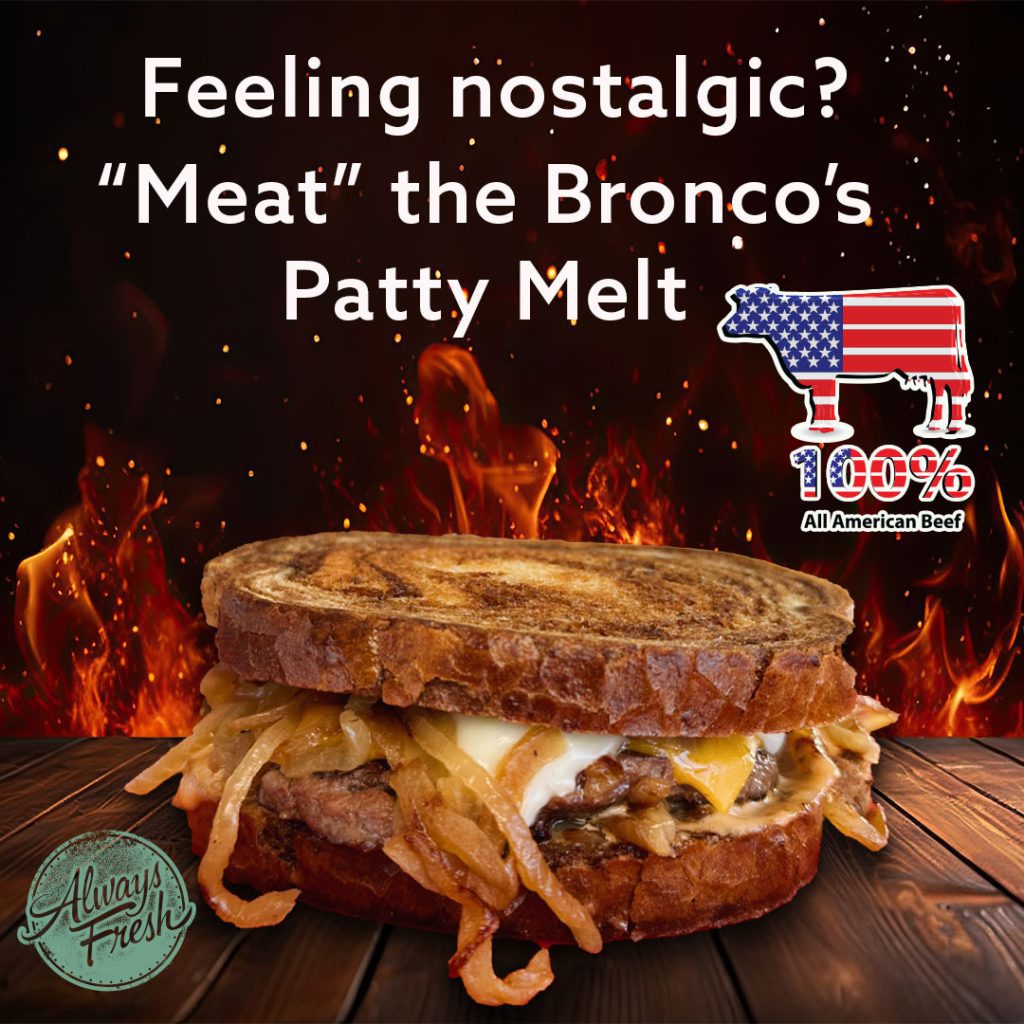Somebody commented at the counter recently, “Wow, I didn’t know you had patty melts on your menu! I love a good patty melt and haven’t had one in years.”
We are not going to argue. It’s a special sandwich we’ve had on our menu for decades and has always been a real favorite.
Fresh ground double thick Nebraska all beef patties smothered in grilled sauteed onions with melted Swiss/American and Sharp American/Cheddar cheeses on a toasted fresh baked Rotella’s marble rye bread bun and topped off with a rich n creamy, tangy Bronco’s sauce. Melt in your mouth gooey goodness!

The origins of the patty melt sandwich are not definitively documented, but culinary historians trace its development to the United States in the mid-20th century, with strong ties to diner culture. The patty melt is generally understood to be a hybrid of a hamburger and a grilled cheese sandwich, consisting of a beef patty, caramelized onions, and melted cheese—typically Swiss or cheddar—served between slices of grilled rye bread.
One widely cited theory attributes the creation of the patty melt to Tiny Naylor, a restaurateur who operated a chain of diners called Tiny Naylor’s in Los Angeles, California. It is believed that Naylor introduced the sandwich in the 1940s or 1950s as a menu innovation to appeal to customers seeking a hearty, flavorful alternative to the classic hamburger. The use of rye bread and the grilling technique distinguished it from other sandwiches of the era, aligning with the postwar trend of combining comfort foods with bold flavors.
The patty melt’s rise in popularity coincided with the expansion of diner and drive-in restaurants across the United States, particularly along highways and in urban centers. Its simplicity, affordability, and satisfying combination of ingredients made it a staple of American casual dining. While Tiny Naylor’s is often credited with its invention, similar sandwiches may have emerged independently in other diners, reflecting a broader culinary evolution rather than a single point of origin.
Evidence supporting this timeline includes references to the patty melt in American cookbooks and menus from the 1950s onward. For instance, recipes resembling the modern patty melt appear in publications like the *Joy of Cooking* in later editions, suggesting its integration into mainstream cuisine by that period. The sandwich’s association with rye bread also points to influences from Jewish-American deli traditions, which popularized rye in the early 20th century.
In summary, while the precise origin remains uncertain, the patty melt likely emerged in the 1940s or 1950s, with Tiny Naylor’s diners in Los Angeles being a key contributor to its development and popularization. Its enduring appeal lies in its straightforward yet distinctive preparation, cementing its place in American culinary history.